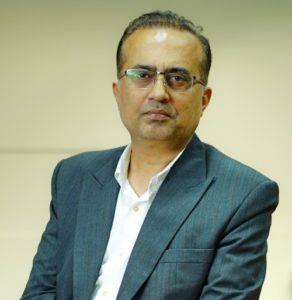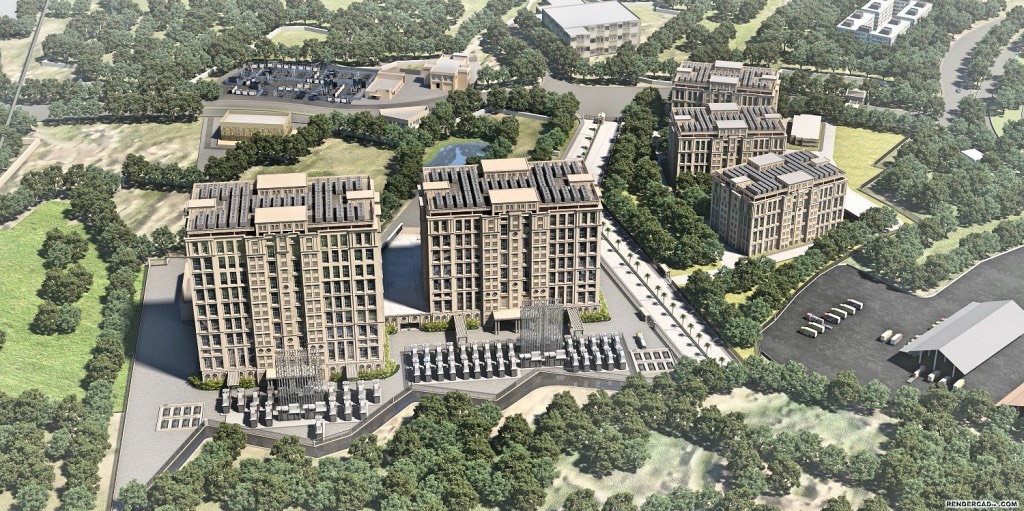The demand for hyperscale data centers and managed services has surged in the past two years as more businesses move their IT infrastructure to the cloud. A key driver is consumer demand for app-based and OTT services running on the cloud. Increased digitalization efforts of the Indian government and plans for smart cities is another driver. Data localization mandates driven by the government has also led to increased regional presence by the MNCs and big tech companies–Google, Apple, Amazon/AWS, Microsoft, Facebook, as well as e-commerce giants. Large enterprises like banking institutions, telecom companies, retail/e-commerce companies and MNCs servicing clients in India need hyperscale data centers. These specialized data centers are different from the regular data centers and more challenging to build, especially in areas where real estate and power are scarce or expensive.
A hyperscale data center is defined as one that offers a portfolio of highly scalable applications and storage services to businesses. According to IDC, a hyperscale data center offers upwards of 5,000 servers with an aggregated space of at least 10,000 sq.ft. across floors and buildings within the same campus.
Hyperscale data centers can scale up the provisioning of compute, storage, networking/connectivity, and power resources for a customer, on-demand. Hence, these specialized data centers are designed and constructed with expansion in mind. The architects or data center builders need to “think big” at the beginning, even before the foundation stone for the building is cast. They need to plan for redundant and ample resources such as power, connectivity, and cooling. Apart from drawing power from the electricity grid, they also need to consider alternative sources of power, such as solar energy. Data center architects also need to have enough real-estate to build more buildings to support future expansion.
According to ReportLinker, the global hyperscale data center market is expected to grow at a CAGR of over 9 percent during the period 2018–2024. The report cites three key factors that will contribute to this growth during the forecast period, namely: Data regulation to Increase facilities investment, increasing procurement of renewable energy for new facilities, increase in deployment of software-defined data center (SDDC).
Until two years ago, the demand for (and the construction of) hyperscale data centers were mainly in the U.S. Today, there are approximately 450 hyperscale data centers in the world. These are coming up in other regions such as the U.K., Germany, China & Hong Kong, Ireland, Brazil, Canada, the Netherlands, Singapore, Japan, South Korea, Australia, India, France, Denmark, Sweden, and Norway. The adoption of cloud-based services and big data are driving the hyperscale data center surge.
India, too, is seeing lots of activity with rampant construction of data centers (though not all of them are truly hyperscale)–in metros such as Mumbai, Navi Mumbai, Chennai, Bengaluru, Noida, and New Delhi. DIGITAL CREED observes that data center construction and occupancy in India picked up in the last two years. The data center providers that we spoke to say capacity is fully utilized within 18 months or earlier.
The companies building hyperscale data centers and data center parks in India are Yotta Infrastructure, NTT-Netmagic, STT GDC India, Sify Data Centres, and CtrlS. But the next few years will see the entry of other players such as Adani Group, Colt DCS, Singapore-based Ascendas-Singbridge Group, and others.
In December 2019, STT Global Data Centres India Private Limited (STT GDC India) announced the opening of STT Bengaluru DC 3 (its third data center in the metro) in Whitefield, Bengaluru. The new Tier III data centre for high-density computing/hyperscalers marks the first facility to be inaugurated as part of STT GDC India’s multi-megawatt capacity expansion plan, spanning major cities in the country.
The newly constructed 18MW, purpose-built facility is spread over 400,000 sq.ft. The entire data center is designed to meet the highest benchmark in green practices and is built from the ground up, drawing on STT GDC India’s combined design, construction, engineering, and operations expertise. It is designed to meet the modern day high-density computing needs of our customers for Mobility, e-Commerce, IoT, Cloud and Big Data.
The Adani Group is partnering with San Francisco based realtor Digital Reality and announced plans to build large data center parks in Andhra Pradesh over the next 20 years.
And International data center firm, Colt, announced an upcoming facility in Mumbai to build a 100MW IT hyper-scale data center facility.
Ascendas-Singbridge Group will also be making an investment of US$1bn in new data centers across India over a period of five years.
Yotta Infrastructure goes Hyperscale

Yotta Infrastructure Data Center Park at Panvel, Navi Mumbai
Yotta Infrastructure plans to build 3 data center parks with 11 hyperscale data center buildings having a combined capacity of 60,000 racks in the next 5-7 years. Its first data center has just gone live.
Yotta is a part of the real estate, infrastructure, and energy major Hiranandani Group. As a Group company, it has large swaths of real estate, so it is building data center parks. Its sister concern Hiranandani Energy has already invested (and continues to invest) in alternate energy sources such as solar and natural gas.
Speaking to DIGITAL CREED, Manish Israni, Head of IT Operations & Engineering and CIO, Yotta Infrastructure, said the Group has an 18-acre data center park that can accommodate 5 buildings in Panvel, Navi Mumbai (see image). The first building has a capacity of 7,200 racks. The second building has 8,400 racks. And Yotta is planning an additional capacity of 15,000 racks in the adjacent buildings that will come up later.

Manish Israni, Head of IT Operations & Engineering and CIO, Yotta Infrastructure,
“Combined with our facilities in Mumbai and Chennai, we’re talking about adding a capacity of 60,000 racks in the next 5-7 years, spread over 50+ acres. We are also aiming for Uptime Institute Tier IV certification, which is the gold standard for data centers globally,” said Israni.
India is becoming the world’s Data center destination
Apart from the entry of MNCs into India, local companies in India are also looking for hyperscale data centers.
Falling data rates in India is causing consumer demand for online services. It is also leading to a data explosion. Due to the involvement of multiple entities in a consumer transaction, multiple copies of the same data are maintained. For instance, in the telecom industry, when a consumer makes a call, the Call Data Record (CDR) is processed seven times for different purposes such as billing, CRM, data warehouse, analytics, etc. So multiple copies of the data set need to be maintained. And this is mandated by the telecom regulator.
India’s data centers are also more power-efficient than data centers elsewhere in the world. And data centers like Yotta and CtrlS have alternate sources of energy from solar farms and gas turbines, which they own.
“The per consumer data center megawatt in India is 15 times less than in Europe. So, we only consume 500 MW in our data centers for 500 million-plus users,” said Israni. “In Europe, they are burning 8,600 MW for 600 Million users.”
The future for India’s data centers looks promising once again. It may be recalled that, just before the recession in 2008, there was a lot of data center construction in the country with players like Tulip Telecom and others. Many of those players have shut shop or sold their businesses.
But with the explosion of data in India and many mobile subscribers, the data center industry here can look forward to brighter days ahead.
Images courtesy Yotta Infrastructure









